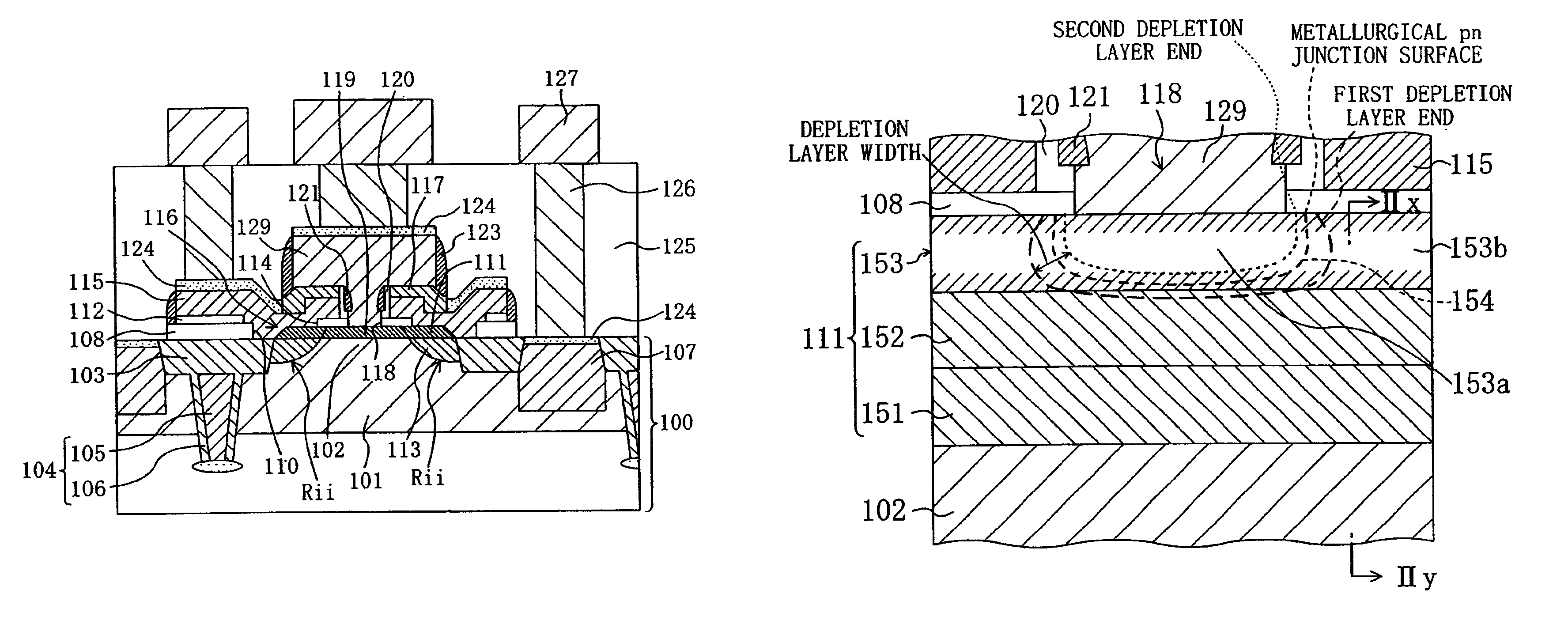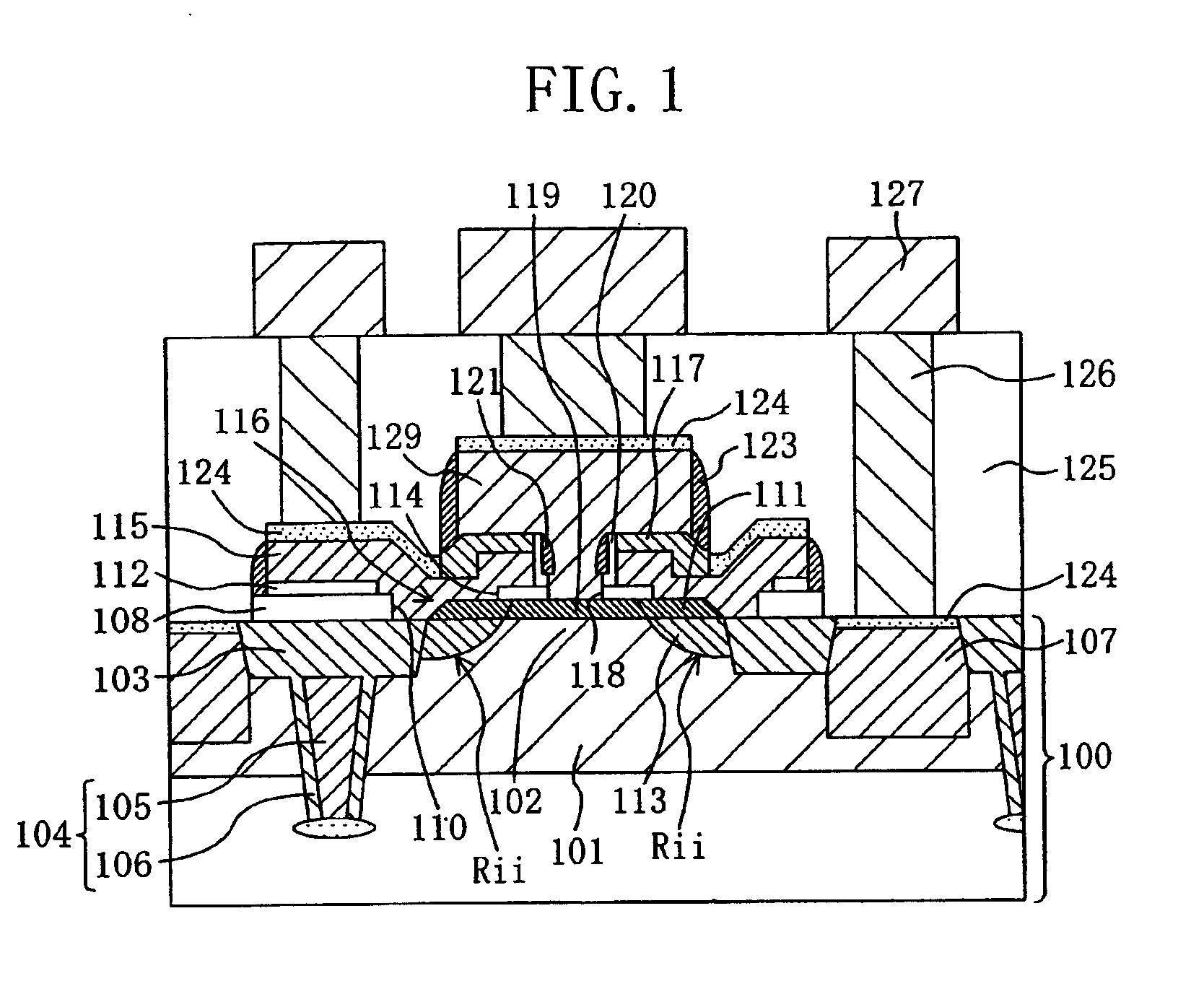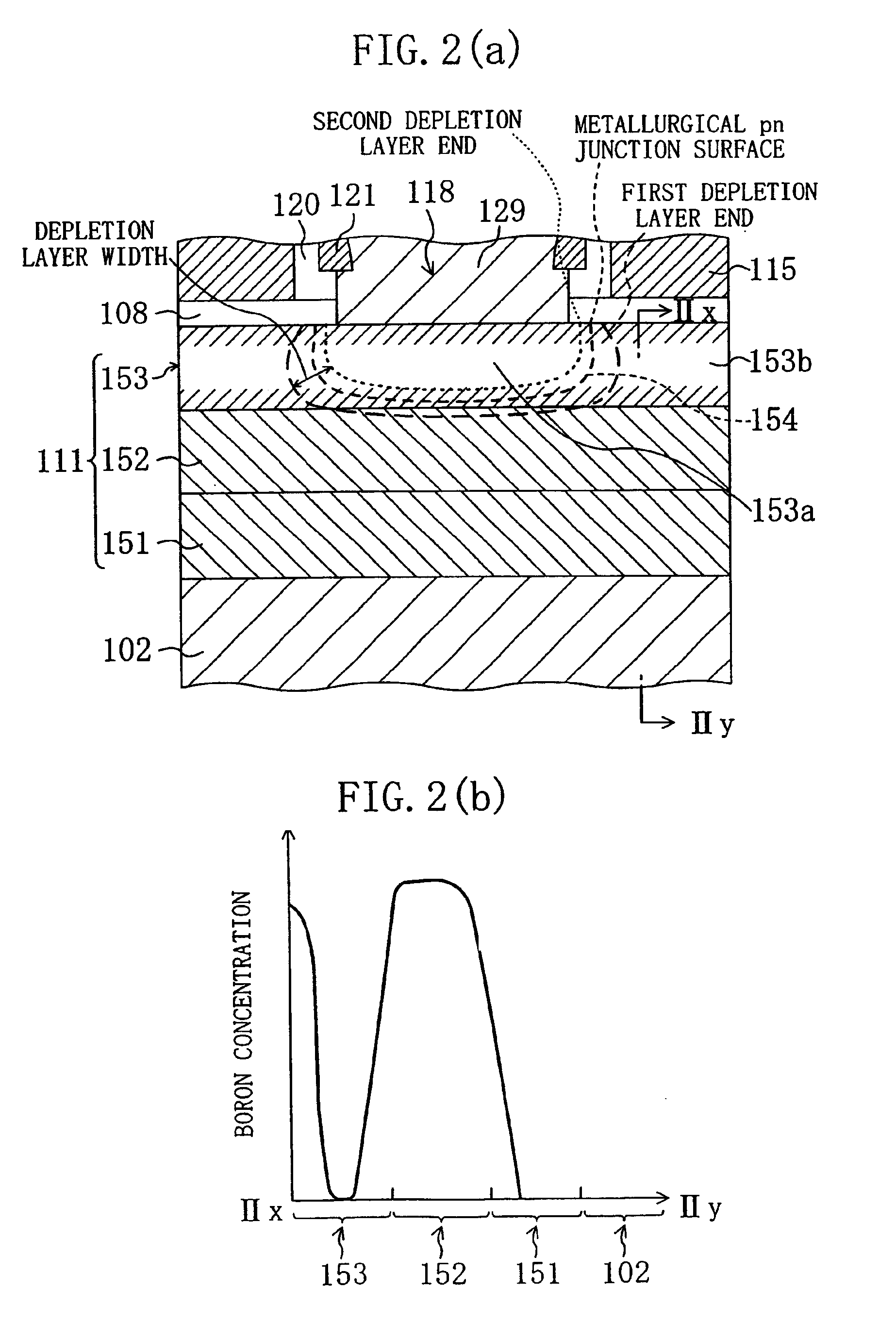Bipolar transistor and fabrication method thereof
a bipolar transistor and fabrication method technology, applied in the direction of transistors, semiconductor devices, electrical devices, etc., can solve the problems of excessive recombination current generation, deterioration of linearity of current characteristics, and discussion of conventional hbt or sige-bicmos
- Summary
- Abstract
- Description
- Claims
- Application Information
AI Technical Summary
Benefits of technology
Problems solved by technology
Method used
Image
Examples
first embodiment
(First Embodiment)
[0061]Initially, the following description will describe, with reference to FIGS. 3(a) through 6(b), a basic flow of the fabrication sequence of an HBT according to a first embodiment.
[0062]Firstly, in the step shown in FIG. 3(a), an N-type retrograde well 101 with a depth of approximately 1 μm is formed on the top portion of an Si substrate 100 having a (001) plane by conducting epitaxial growth of an Si single crystal layer while doping an N-type impurity, or conducting high-energy ion implantation after the epitaxial growth. It should be appreciated, however, that the retrograde well 101 may be formed by conducting ion implantation at a part of the Si substrate 100 without the epitaxial growth. At this point, a region in the vicinity of the surface of the Si substrate 100 is arranged to have a concentration of the N-type impurity at approximately 1×1017 atoms·cm−3, so that the area will serve as a collector layer of an HBT.
[0063]Then, for the isolation, provided...
second embodiment
(Second Embodiment)
[0085]In the present embodiment, the basic flow of the fabrication sequence of an HBT is the same as described in the first embodiment with reference to FIGS. 2(a) through 6(b).
[0086]The present embodiment is characterized in that the step shown in FIG. 4(a) is carried on as described below. FIGS. 8(a) and 8(b) are an enlarged partial cross section showing an emitter-base junction in the step shown in FIG. 4(a) during the fabrication sequence discussed above, and a doping profile of boron along the cross section, respectively.
[0087]In the present embodiment, the treatment is applied in the same manner as was discussed in the first embodiment, whereby formed on the collector layer 102 are an undoped SiGe spacer layer 151 with a thickness of approximately 40 nm and a graded SiGe base layer 152 including boron at a concentration of approximately 4×1018 atoms·cm−3 with a thickness of approximately 40 nm.
[0088]Then, a supply of hydrogen-diluted diborane (B2H6) is stopp...
third embodiment
(Third Embodiment)
[0094]In the present embodiment, the basic flow of the fabrication sequence of an HBT is the same as described in the first embodiment with reference to FIGS. 2(a) through 6(b).
[0095]The present embodiment is characterized in that the steps shown in FIGS. 4(a) and 4(b) are conducted as described below. FIGS. 9(a) and 9(b) are an enlarged partial cross section showing an emitter-base junction in the steps shown in FIGS. 4(a) and 4(b) during the fabrication sequence discussed above, and a doping profile of boron along the cross section, respectively.
[0096]In the present embodiment, the treatment is applied in the same manner as was discussed in the first embodiment, whereby formed on the collector layer 102 are an undoped SiGe spacer layer 151 with a thickness of approximately 40 nm and a graded SiGe base layer 152 including boron at a concentration of approximately 4×1018 atoms·cm−3 with a thickness of approximately 40 nm.
[0097]Then, a supply of hydrogen-diluted dib...
PUM
 Login to View More
Login to View More Abstract
Description
Claims
Application Information
 Login to View More
Login to View More - R&D
- Intellectual Property
- Life Sciences
- Materials
- Tech Scout
- Unparalleled Data Quality
- Higher Quality Content
- 60% Fewer Hallucinations
Browse by: Latest US Patents, China's latest patents, Technical Efficacy Thesaurus, Application Domain, Technology Topic, Popular Technical Reports.
© 2025 PatSnap. All rights reserved.Legal|Privacy policy|Modern Slavery Act Transparency Statement|Sitemap|About US| Contact US: help@patsnap.com



